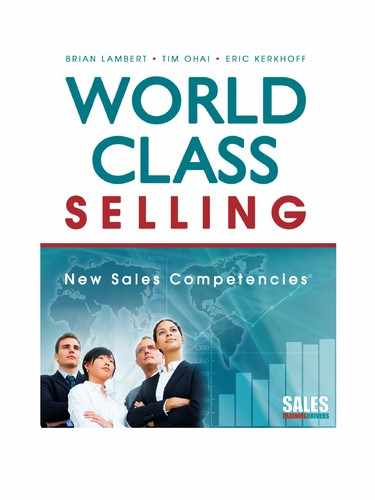Foreword
Today’s global economy and business climate can be summed up in one word: change. As business leaders work to increase profits, maximize shareholder value, and grow the business amid change and economic uncertainty, they rely on their sales function to move the organization forward. This means that everyone in the sales function must be in the right jobs and equipped with the right skills to perform effectively for the organization.
What does it take to have the right sales force with the right skills? It starts with understanding what a sales professional must know and be able to do to be successful for an organization or client. In other words, knowing what competencies are necessary for sales success will help organizations recruit, build, and manage their sales talent more effectively, now and in the future.
For more than 20 years, the American Society for Training & Development has created competency models that define the standards of excellence for the learning profession. The ASTD 2008 World-Class Sales Competency Model is an example of the growing importance of the sales function within organizations. The model provides a framework for the competencies that sales professionals need today and will need in the future. Having a defined set of competencies is a hallmark of a true profession.
To form a new, competency-based approach to sales training and development, ASTD commissioned the 2008 World-Class Sales Competency Study. This report is the culmination of that work. Building on ASTD’s competency research from the past three decades as well as work by Productivity Dynamics, Growth & Associates, and a blue-ribbon panel of experts, this report will help guide sales training and development into the future.
This report and the model within it take a systems view. The report describes how stakeholders within the sales organization can improve the collaborative strength of the whole and unveils a new competency model that defines selling—including training and development—within the context of the roles sales team members play and the processes they follow. It is much bigger than the traditional definition of sales training for people who work toward sales quotas. Rather, it relies on a view of selling as a system, an interrelated set of functions that constitutes a shared performance culture driving toward a mutually beneficial exchange of value. It also takes into account the barriers that salespeople encounter on their way to excellent performance, as well as the trends influencing changes in the profession and their implications.
By adopting a systematic, strategic, and competency-based approach to sales training and development, organizations can tear down those barriers. Aligning business needs and revenue goals with sales training and development efforts and performance improvements can significantly increase the return-on-investment that companies obtain from their investments in sales training.
Tony Bingham
ASTD President and CEO
